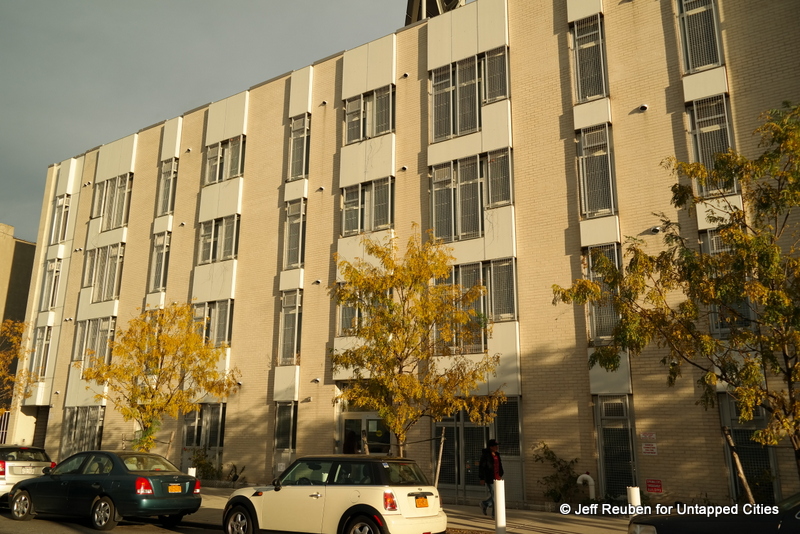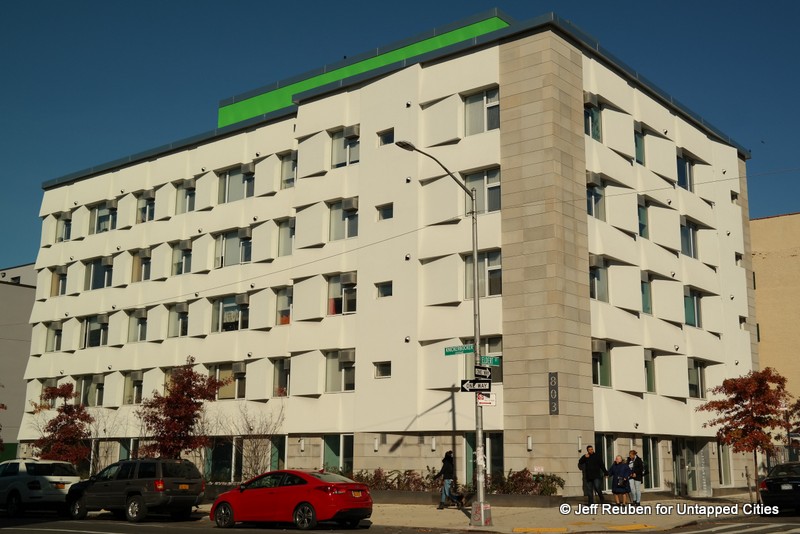8. Mennonite United Revival, Bushwick

In Bushwick, Brooklyn, a local Mennonite Church and the Ridgewood-Bushwick Senior Citizen Council (RBSCC) teamed up to create Mennonite United Revival Apartments, a European inspired green affordable housing project. The building adheres to strict Passive House energy efficiency standards, which have been used in Germany for decades but have only recently caught on in the US. Air-tight insulation and ventilation systems are used to make buildings at least 75 percent more energy efficient than normal construction, which far exceeds LEED Platinum benchmarks.
 Knickerbocker Commons (Passive House project)
Knickerbocker Commons (Passive House project)
The 4-story, 24-unit building located at 424 Melrose Street, is touted as the first Passive House affordable apartment building in the US. The project’s architect, Chris Benedict, also designed a second Passive House affordable building for RBSCC in Bushwick called Knickerbocker Commons, which also opened in 2014.
According to Benedict and RBSCC, construction costs for these two buildings were the same as standard projects. Others in New York have taken notice. For example, the de Blasio administration is developing an all affordable Passive House project designed by Dattner Architects at 425 Grand Concourse in the South Bronx with 241 units, which is slated to open in 2020. Just as Via Verde provided a template for a number of green affordable projects, these Passive House developments may be updating the model.





